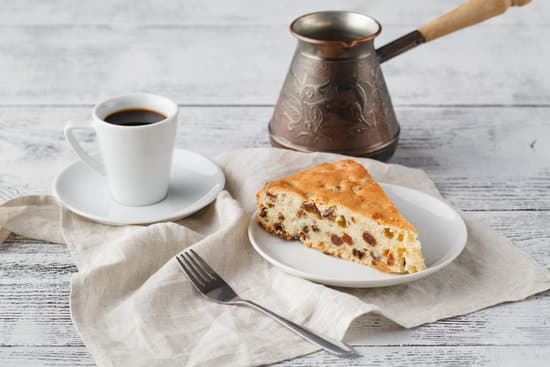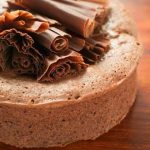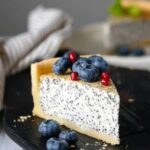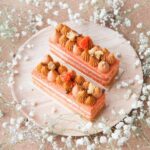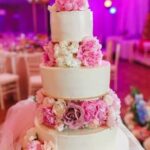Are you looking to take your cake decorating skills to the next level? Look no further than this comprehensive guide on creating the perfect decorator icing recipe for cakes. Whether you’re a seasoned baker or a beginner in the world of cake decoration, having the right icing is essential for bringing your creations to life.
Decorator icing is not just about adding a finishing touch to your cakes – it’s a key element in expressing your creativity and personal style. By using the right ingredients and following the proper techniques, you can transform a simple cake into a work of art that will impress any crowd. In this guide, we will walk you through everything you need to know about making and using decorator icing successfully.
From choosing the best ingredients to mastering the ideal consistency for decorating, every step in creating decorator icing plays a crucial role in achieving stunning results. Whether you’re aiming for intricate designs or simple elegance, learning how to work with decorator icing will open up endless possibilities for your cake decorating projects. Get ready to unleash your artistic side and elevate your cakes with homemade decorator icing.
The Importance of Using the Right Ingredients for Decorator Icing Recipe
When it comes to creating the perfect decorator icing for your cakes, using the right ingredients is essential. Each component plays a crucial role in achieving the desired consistency, taste, and overall look of your icing. Whether you’re a beginner or an experienced baker, understanding the importance of each ingredient can make a significant difference in the outcome of your cake decorating endeavors.
To ensure success in your decorator icing recipe for cakes, here are some key ingredients to keep in mind:
- Confectioners’ Sugar: Also known as powdered sugar, confectioners’ sugar is the main ingredient in most decorator icing recipes. It provides sweetness and helps create a smooth texture.
- Butter or Shortening: Butter adds flavor and richness to the icing, while shortening helps stabilize the mixture. The choice between butter and shortening depends on personal preference and dietary restrictions.
- Vanilla Extract: Vanilla extract enhances the flavor profile of the icing and adds a hint of warmth to complement various cake flavors.
Additionally, depending on the type of decorator icing you’re making (buttercream, royal icing, etc.), other ingredients like egg whites, meringue powder, or corn syrup may be required. It’s important to follow your chosen recipe carefully and use high-quality ingredients for best results. By understanding how each ingredient contributes to the overall quality of your decorator icing, you can elevate your cake decorating skills and create stunning edible works of art.
Step-by-Step Guide to Making Perfect Decorator Icing for Your Cake
Gathering the Ingredients
Before you start making your decorator icing for your cake, make sure you have all the necessary ingredients on hand. For a basic decorator icing recipe, you will need confectioners’ sugar, meringue powder, water, and vanilla extract. These simple ingredients are key to creating a smooth and easy-to-use icing for decorating your cakes.
Mixing the Decorator Icing
To make the perfect decorator icing, start by combining confectioners’ sugar and meringue powder in a mixing bowl. Gradually add water and vanilla extract while mixing until you achieve the desired consistency. It’s essential to mix the icing thoroughly to ensure that there are no lumps and that it is smooth and glossy.
Coloring Your Icing
Once you have achieved the right consistency for your decorator icing, it’s time to add some color. Gel food coloring works best for tinting icing as it provides vibrant hues without altering the consistency of the icing. Divide the icing into separate bowls if you want to create different colors for your cake decorations.
Remember to start with a small amount of food coloring and gradually add more until you reach your desired shade. Experiment with different color combinations to unleash your creativity in decorating cakes using your homemade decorator icing recipe.
Tips and Tricks for Achieving the Ideal Consistency for Decorating
When it comes to decorating a cake with decorator icing, achieving the ideal consistency is crucial for creating stunning designs. The right consistency will help you pipe intricate patterns, borders, and lettering onto your cake with precision. The key to getting the perfect texture lies in finding the balance between a smooth flow and enough stiffness to hold its shape. Here are some tips and tricks to help you achieve the ideal consistency for decorating your cakes.
One important tip is to start with room temperature ingredients when making your decorator icing. This will ensure that everything blends together smoothly and avoids any clumps or lumps in your icing.
You can also adjust the consistency by adding more liquid (such as water or milk) if your icing is too thick or more powdered sugar if it is too thin. It’s a delicate process, so it’s best to add small amounts at a time until you reach the desired texture.
Another trick is to test the consistency of your decorator icing before decorating your cake. You can do this by piping a small amount onto a plate or parchment paper to see how it holds its shape. If the icing spreads out too much, it’s too thin, and if it doesn’t pipe smoothly, it’s too thick.
Making adjustments at this stage will save you from frustration when working on your actual cake decoration. Remember, practice makes perfect, so don’t be afraid to experiment with different consistencies until you find what works best for your design.
Lastly, incorporating gel food coloring into your decorator icing can affect its consistency. While liquid food coloring can add extra moisture and alter the texture of the icing, gel colors are more concentrated and won’t change the consistency as much.
If you find that your colored icing is too thin after adding gel coloring, compensate by mixing in more powdered sugar gradually until you reach the right thickness for decorating. By following these tips and tricks, you’ll be well on your way to mastering the ideal consistency for using decorator icing on your cakes.
| Tips for Achieving Ideal Consistency | Benefits |
|---|---|
| Start with room temperature ingredients | Smooth blending without clumps |
| Test consistency before decorating | Avoid frustration during decoration process |
| Use gel food coloring instead of liquid | Less moisture added for better control over consistency |
Creative Techniques for Using Decorator Icing to Elevate Your Cake Designs
Decorator icing is a versatile and essential component in cake decorating. With the right skills and techniques, you can take your cake designs to the next level using decorator icing. From simple borders to intricate designs, here are some creative techniques for using decorator icing to elevate your cake designs:
- Piping: One of the most common ways to use decorator icing is through piping. Using piping bags fitted with different tips, you can create various shapes and designs on your cake. From dots and lines to rosettes and shells, piping allows for endless creativity in decorating your cakes.
- Writing: Another fun technique is writing messages or names on your cakes using decorator icing. Whether it’s a birthday wish, a congratulatory message, or simply the name of the recipient, writing with icing adds a personal touch to your creations.
- Flowers: Decorator icing can also be used to create beautiful floral designs on cakes. With the right tools and techniques, you can pipe delicate petals and leaves to form realistic-looking flowers. From roses to daisies, the possibilities are endless when it comes to floral decorations.
Using these creative techniques, you can truly elevate your cake designs and impress your friends and family with your decorating skills.
Remember that practice makes perfect when it comes to working with decorator icing. Don’t be afraid to experiment with different techniques and designs until you find what works best for you. With time and patience, you’ll soon be creating stunning cakes that look as good as they taste.
So go ahead, unleash your creativity and have fun exploring all the possibilities that decorator icing has to offer in taking your cake decorating skills to new heights.
Troubleshooting Common Issues When Working With Decorator Icing
When working with decorator icing for cake decorating, it is common to encounter some issues along the way. Understanding and being able to troubleshoot these problems can make a significant difference in the final outcome of your cake design. One of the most common issues when working with decorator icing is the consistency of the icing itself.
If the icing is too thin, it will not hold its shape when piped onto the cake. On the other hand, if the icing is too thick, it can be difficult to work with and may result in uneven or messy designs.
To troubleshoot issues related to icing consistency, it’s essential to have a good understanding of the ingredients used in your decorator icing recipe. For example, if your icing is too thin, you can try adding more confectioners’ sugar to thicken it up.
On the other hand, if your icing is too thick, adding a small amount of liquid such as milk or water can help achieve the desired consistency. It’s important to make these adjustments gradually and mix well after each addition to avoid over-thickening or thinning out the icing too much.
Another common issue when working with decorator icing is air bubbles forming in the icing while piping. These air bubbles can cause an uneven texture on your cake design and affect its overall appearance.
To prevent air bubbles from forming in your decorator icing, gently tap or knead the piping bag before piping to release any trapped air. Additionally, using a small pin or toothpick to gently pop any visible air bubbles on the surface of the icing can also help create a smoother finish on your cake decorations.
| Common Issue | Troubleshooting Tip |
|---|---|
| Icing too thin | Add more confectioners’ sugar gradually to thicken |
| Icing too thick | Add small amounts of liquid like milk or water for desired consistency |
| Air bubbles forming while piping | Gently tap or knead piping bag before piping; Pop visible air bubbles with a toothpick |
Inspiring Ideas for Decorating Cakes With Homemade Decorator Icing
Decorating cakes with homemade decorator icing can truly elevate your cake designs and impress all your friends and family. Once you have mastered creating the perfect decorator icing recipe for your cakes, the possibilities are endless in terms of creativity and design. Here are some inspiring ideas to help you take your cake decorating skills to the next level:
Piping Flowers and Designs
One of the most classic and beautiful ways to decorate a cake with decorator icing is by piping flowers and intricate designs. With some practice and the right piping tips, you can create stunning floral arrangements, delicate lace patterns, or whimsical shapes on your cakes. Experiment with different colors of icing to add depth and dimension to your designs.
Sculpting Figures and Characters
For special occasions like birthdays or themed parties, consider sculpting figures or characters out of decorator icing to adorn your cake. Whether it’s a favorite cartoon character, animal, or even a miniature version of the recipient, this creative touch will surely delight everyone at the celebration. Use different consistencies of icing to achieve detailed features and textures.
Ombre or Watercolor Effects
Give your cakes a trendy and artistic look by incorporating ombre or watercolor effects using decorator icing. Blend different shades of icing together smoothly for a seamless gradient effect or create soft brushstroke patterns for a watercolor-inspired design. These techniques add a modern twist to traditional cake decorating and are sure to impress your guests.
With these inspiring ideas in mind, let your imagination run wild as you experiment with different techniques and decorations using your homemade decorator icing recipe for cake. Remember that practice makes perfect, so don’t be afraid to try out new designs and push yourself creatively when it comes to decorating cakes with decorator icing. The more you explore and innovate, the more unique and memorable your cake creations will become.
Conclusion
In conclusion, mastering the art of cake decorating with your own decorator icing recipe can truly elevate your creations to a whole new level. By understanding the importance of using the right ingredients, following a step-by-step guide, and implementing tips and tricks for achieving the ideal consistency, you can ensure that your cakes not only look beautiful but taste delicious as well.
With creative techniques and inspiring ideas for using decorator icing, you have the freedom to let your imagination run wild and create unique designs that truly reflect your personal style and artistry. Whether you’re a beginner or an experienced baker, working with decorator icing allows you to explore different textures, colors, and decorations to bring your cakes to life.
So don’t be afraid to experiment, practice, and learn from any challenges you may encounter along the way. With dedication and passion for cake decorating, you will soon discover the joy and satisfaction of creating stunning edible works of art that will surely delight anyone who takes a bite. So roll up your sleeves, whip up some decorator icing, and let your creativity shine through in every cake you decorate.
Frequently Asked Questions
What Is the Best Icing to Use for Cake Decorating?
The best icing to use for cake decorating depends on personal preference and the desired outcome. Buttercream icing is a popular choice due to its versatility, easy application, and ability to hold intricate designs well.
What Is the Best Icing to Practice Cake Decorating?
When practicing cake decorating, it is recommended to start with buttercream icing. This type of frosting is forgiving and easy to work with, allowing beginners to practice basic piping techniques and decorations without feeling overwhelmed.
What Type of Frosting Do Professional Bakers Use?
Professional bakers often use Swiss meringue buttercream or Italian meringue buttercream for their cakes. These types of frostings are well-loved in the industry for their smooth texture, stability, and ability to hold up well in different weather conditions. Their luxurious taste and feel also make them a favorite among customers looking for high-quality desserts.

Welcome to our cake decorating blog! My name is Destiny Flores, and I am the proud owner of a cake decorating business named Cake Karma. Our mission is to provide delicious, beautiful cakes for all occasions. We specialize in creating custom cakes that are tailored specifically to each customer’s individual needs and tastes.

